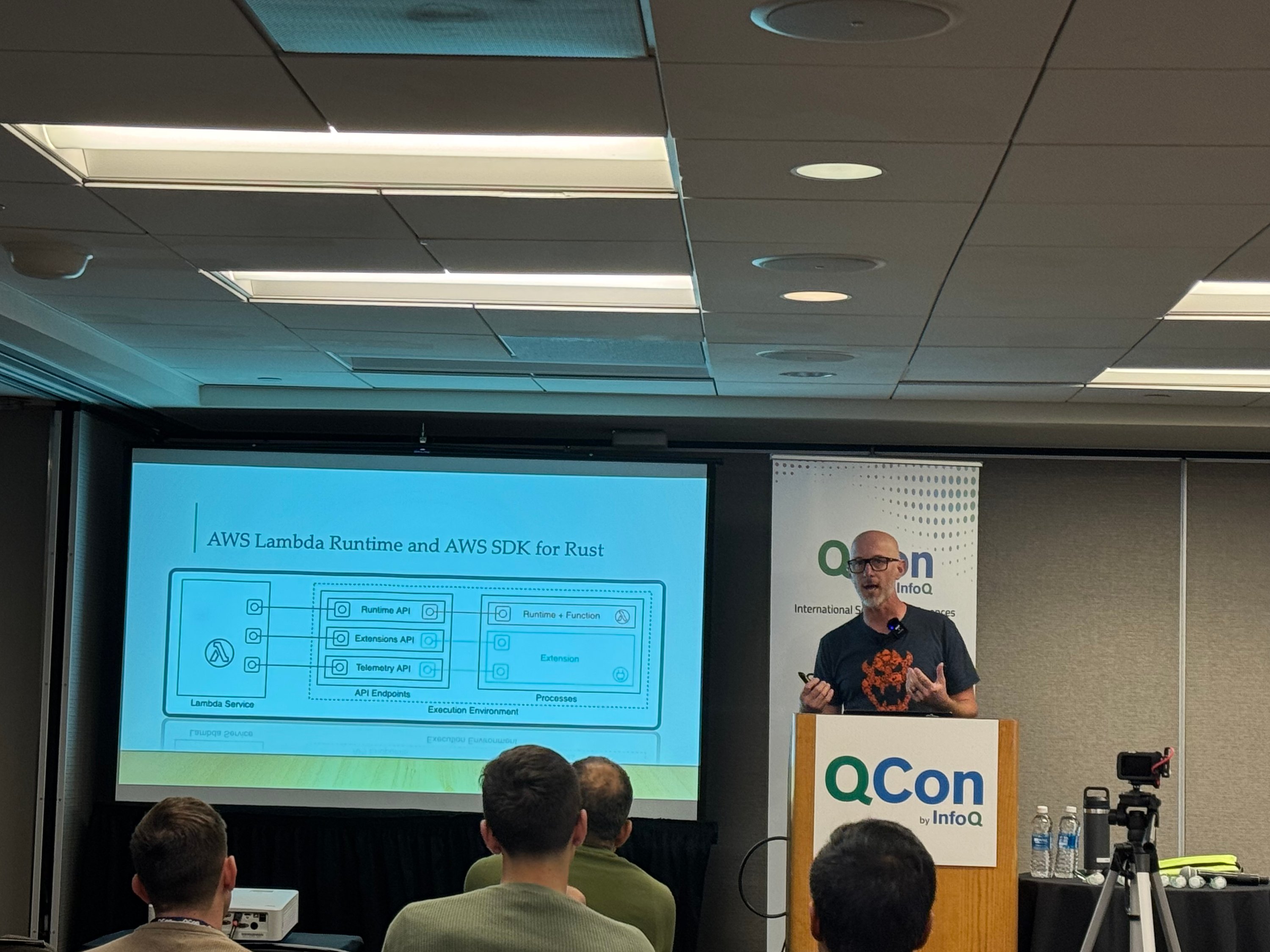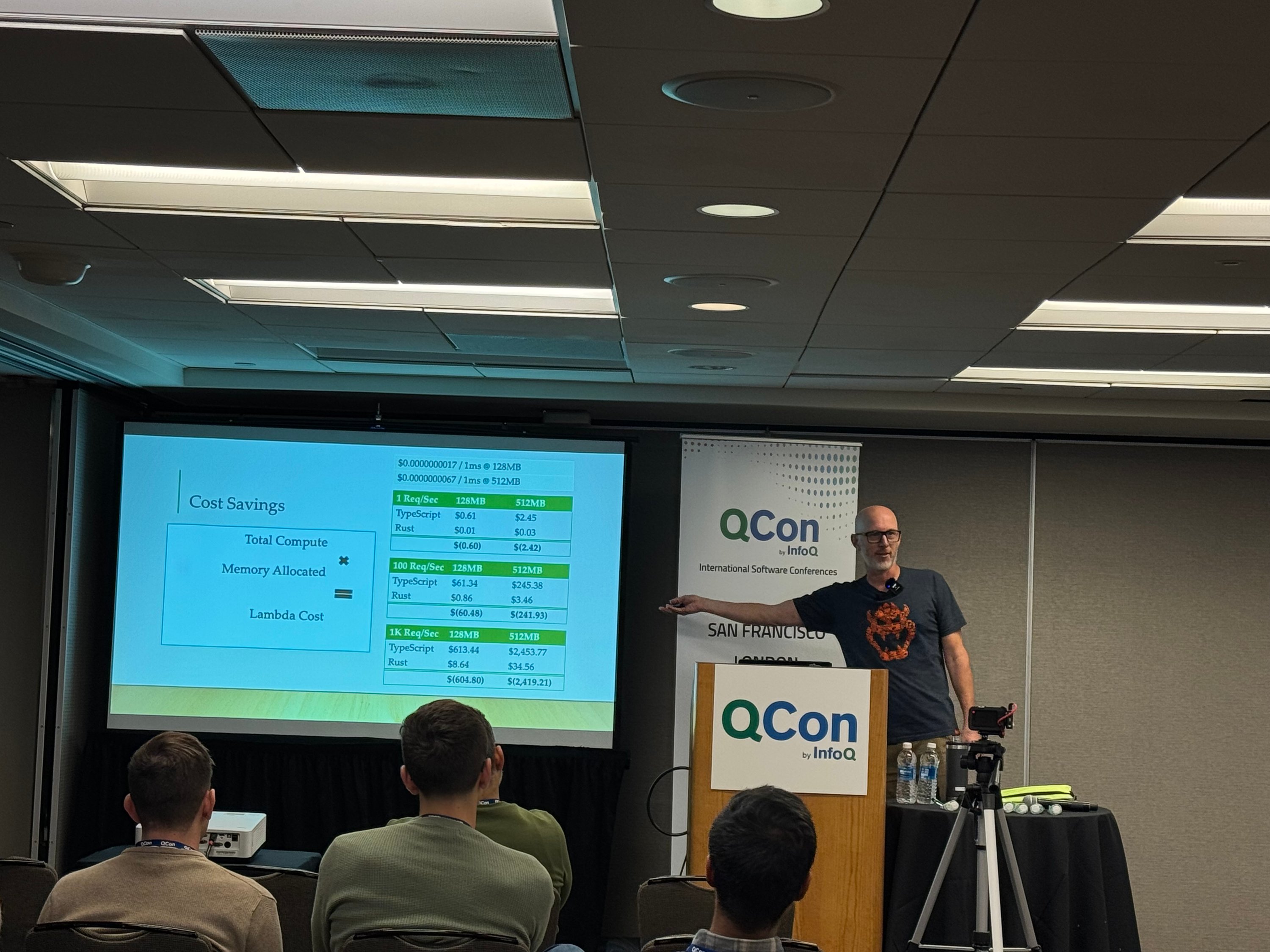In his talk on serverless computing, Benjamen Pyle demonstrated how Rust, combined with AWS Lambda, delivers high performance, safety, and scalability for modern serverless applications. The session highlighted the synergy between Rust's powerful systems-level capabilities and Lambda’s event-driven, pay-as-you-go compute model, offering developers a robust framework for building scalable, efficient applications.
Rust is known for its performance and safety, providing a developer experience that reduces bugs and improves reliability. As a serverless platform, AWS Lambda eliminates the need to manage infrastructure, offering scalability and predictable cost structures. Pyle highlighted that the two technologies complement each other, enabling developers to build high-performing, cost-effective serverless applications.
Fundamental serverless principles were discussed, including:
- No provisioning or infrastructure management.
- Cost predictability is tied to usage.
- High availability and reliability with no planned downtime.
- Simple deployment via API calls.
Pyle outlined how Rust enhances serverless applications, showcasing its ability to optimize performance and resource usage. He introduced three pillars for success when using Rust with Lambda:
- Multi-Lambda Projects with Cargo
Rust projects can leverage Cargo workspaces to organize multiple Lambda functions effectively. Pyle recommended structuring projects with isolated Lambda functions for specific tasks, such as handling HTTP verbs or interacting with external systems. While this approach enhances modularity and reduces risks when introducing new features, it presents challenges around code reuse. Pyle suggested using shared libraries to address this, ensuring reusable components for common tasks like API interactions, error handling, and data modeling. - Using AWS Lambda Runtime and SDK
The AWS Lambda runtime for Rust is an open-source project that facilitates communication with Lambda APIs. It handles event triggers and API responses, streamlining function execution. Rust’s AWS SDK provides additional capabilities, including support for services like DynamoDB, S3, and ECS. Pyle emphasized the SDK’s reliability, noting its built-in retries, identity management, and structured request/response handling. Code examples demonstrated how Rust simplifies operations like reading from and writing to DynamoDB with efficient execution that reduces latency. - Infrastructure as Code (IaC) for Repeatability
Automation was a recurring theme, with Pyle stressing the importance of IaC tools like AWS CDK, Terraform, and Pulumi. Rust projects can integrate with AWS CDK via Cargo Lambda, enabling developers to cross-compile, optimize releases, and test locally. This approach supports consistent builds, reducing errors and accelerating development cycles.
Rust’s efficiency shines in serverless environments. Pyle explained that Lambda functions experience two execution states: cold starts (initial load) and warm starts (subsequent executions). Rust significantly reduces cold start times compared to other languages like TypeScript or Python, making it a preferred choice for latency-sensitive applications. Its fast execution also translates to cost savings. A comparison revealed that processing 100,000 requests costs as little as $0.03 with Rust versus $2.45 with TypeScript.
Lastly, according to Pyle, Rust and AWS Lambda offer a compelling solution for high-performance serverless computing. By following best practices—leveraging multi-Lambda designs, using the AWS SDK and runtime, and embracing automation with IaC—developers can build scalable, cost-effective applications that maximize user experience and resource efficiency. Pyle says that Rust’s performance reduces operational costs and aligns with sustainability goals, making it a good choice for serverless developers.



